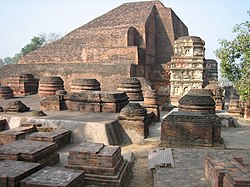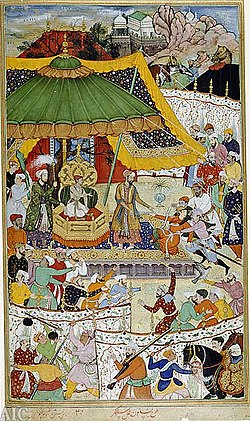


This is a bibliography of notable works about the historical Indian subcontinent as well as the modern-day Republic of India.
Contents
- India history books
- Single volume works
- Multivolume works
- Race, caste and tribe
- Primary sources 2
- Secondary sources 2
- Biography
- Biographical dictionaries and encyclopedias
- Manuals and gazetteers
- Travelogues
- Early period
- Early modern period
- Late modern
- Provinces
- Biodiversity and environment
- Flora
- Fauna
- Princely states
- People, politics and customs
- Religion, culture and arts
- Performance art
- Religion, folk tales, and spiritual heritage
- Fiction
- See also
- References
- External links